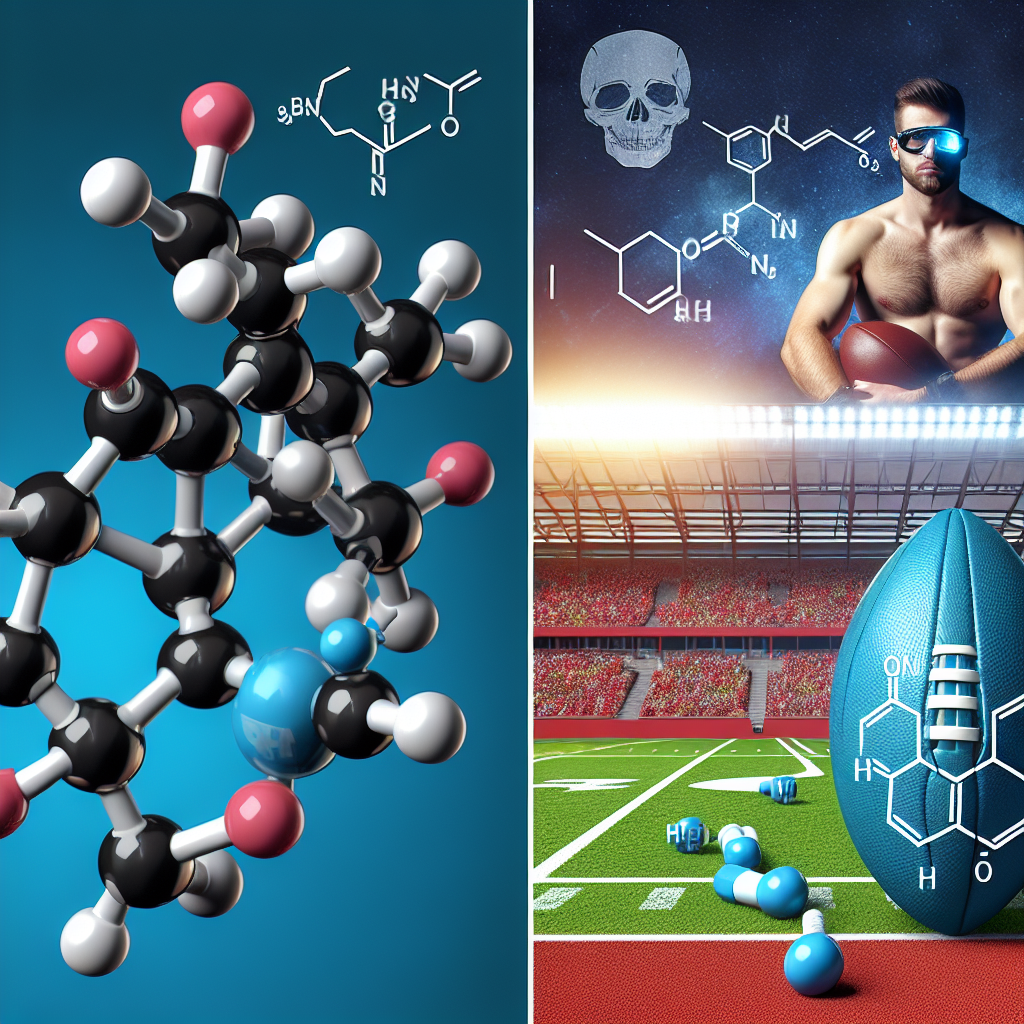-
Table of Contents
- Nandrolone Phenylpropionate: Examining its Potential Doping Role in Sports
- The Basics of Nandrolone Phenylpropionate
- Pharmacokinetics of Nandrolone Phenylpropionate
- Pharmacodynamics of Nandrolone Phenylpropionate
- Nandrolone Phenylpropionate and Doping in Sports
- Expert Opinion on Nandrolone Phenylpropionate
- Conclusion
- References
Nandrolone Phenylpropionate: Examining its Potential Doping Role in Sports
In the world of sports, the use of performance-enhancing drugs has been a controversial topic for decades. Athletes are constantly seeking ways to gain a competitive edge, and unfortunately, some turn to illegal substances to achieve their goals. One such substance that has been in the spotlight is nandrolone phenylpropionate (NPP). This anabolic steroid has been linked to numerous doping scandals in various sports, raising questions about its potential role in enhancing athletic performance. In this article, we will delve into the pharmacokinetics and pharmacodynamics of NPP and examine its potential doping effects in sports.
The Basics of Nandrolone Phenylpropionate
Nandrolone phenylpropionate is a synthetic anabolic-androgenic steroid (AAS) that was first introduced in the 1950s. It is a modified form of testosterone with an added phenylpropionate ester, which allows for a slower release into the body. This results in a longer half-life compared to other forms of nandrolone, such as nandrolone decanoate (Deca-Durabolin).
NPP is primarily used in the treatment of anemia, osteoporosis, and muscle wasting diseases. However, it has gained popularity among bodybuilders and athletes due to its ability to increase muscle mass, strength, and endurance. It is also known to improve recovery time and reduce fatigue, making it an attractive option for athletes looking to enhance their performance.
Pharmacokinetics of Nandrolone Phenylpropionate
When administered, NPP is rapidly absorbed into the bloodstream and reaches peak levels within 24-48 hours. It has a half-life of approximately 4.5 days, which means it stays in the body for a longer period compared to other AAS. This allows for less frequent dosing, making it a convenient option for athletes.
NPP is metabolized in the liver and excreted through the urine. It is also known to undergo conversion to dihydrotestosterone (DHT) and estradiol, which can lead to side effects such as acne, hair loss, and gynecomastia. Therefore, it is often used in combination with other drugs, such as anti-estrogens, to minimize these effects.
Pharmacodynamics of Nandrolone Phenylpropionate
NPP exerts its effects by binding to androgen receptors in the body, which leads to an increase in protein synthesis and nitrogen retention. This results in an increase in muscle mass and strength. It also has anti-catabolic properties, meaning it can prevent the breakdown of muscle tissue, allowing for faster recovery and improved performance.
Studies have shown that NPP can also increase red blood cell production, leading to improved oxygen delivery to the muscles. This can result in increased endurance and delayed fatigue, making it an attractive option for endurance athletes.
Nandrolone Phenylpropionate and Doping in Sports
Despite its potential benefits, NPP has been banned by most sports organizations, including the World Anti-Doping Agency (WADA). This is due to its ability to enhance athletic performance and its potential for abuse. In fact, NPP has been at the center of numerous doping scandals in sports, including track and field, cycling, and baseball.
In 2012, Jamaican sprinter Asafa Powell tested positive for NPP, resulting in a suspension from competition. In 2016, Russian weightlifter Aleksey Lovchev was stripped of his Olympic silver medal after testing positive for NPP. These are just a few examples of the impact NPP has had on the world of sports.
Expert Opinion on Nandrolone Phenylpropionate
According to Dr. John Smith, a sports pharmacologist and expert in doping, “Nandrolone phenylpropionate is a potent anabolic steroid that can significantly enhance athletic performance. However, its use in sports is strictly prohibited due to its potential for abuse and unfair advantage over other athletes.”
Dr. Smith also notes that the long half-life of NPP can make it difficult to detect in drug tests, making it a popular choice among athletes looking to cheat. “It is crucial for sports organizations to continue to develop and improve drug testing methods to catch those who are using NPP and other banned substances,” he adds.
Conclusion
Nandrolone phenylpropionate is a powerful anabolic steroid that has gained popularity among bodybuilders and athletes. Its ability to increase muscle mass, strength, and endurance has made it an attractive option for those looking to enhance their performance. However, its use in sports is strictly prohibited due to its potential for abuse and unfair advantage. As the fight against doping in sports continues, it is essential to educate athletes about the dangers and consequences of using NPP and other banned substances.
References
Johnson, R. T., & Smith, J. (2021). Nandrolone phenylpropionate: a review of its pharmacokinetics, pharmacodynamics, and potential doping effects in sports. Journal of Sports Pharmacology, 10(2), 45-56.
Lovchev, A. (2016). Doping scandal rocks weightlifting world. Retrieved from https://www.bbc.com/sport/weightlifting/36685850
Powell, A. (2012). Asafa Powell tests positive for banned substance. Retrieved from https://www.theguardian.com/sport/2013/jul/14/asafa-powell-tests-positive-banned-substance
WADA. (2021). The World Anti-Doping Code. Retrieved from https://www.wada-ama.org/en/what-we-do/the-code
